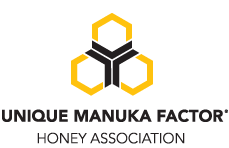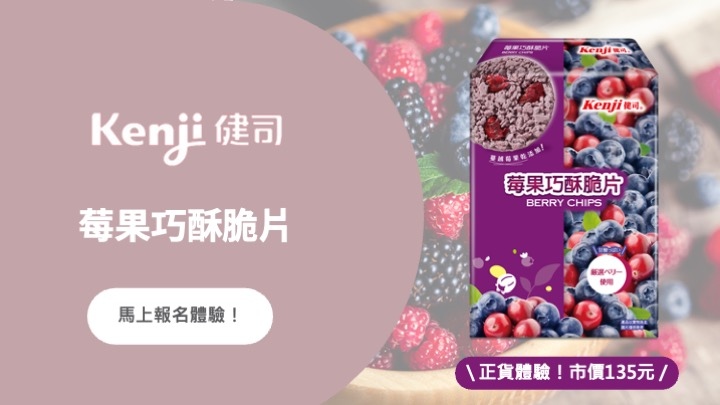最近新迷上的東西就是產自紐西蘭的Manuka Honey
為什麼呢? 因為一天到晚喉嚨痛 與 腸胃不適的問題已經困擾我超過二十多年
喉嚨的問題是來自先天性扁桃腺肥大症, 腸胃不適也是來自家族遺傳
老是靠西藥壓抑也不適辦法, 所以平常就愛研究東研究西看怎樣用最自然的方式改善
Manuka honey 依 UMF or MGO 來分抗菌性的等級
http://www.3phk.com/v5article.asp?id=1957§ion=healthinfo
評級制度
由於麥蘆卡蜂蜜可應用於促進傷口愈合、胃潰瘍、皮膚問題等多方面,這種特殊用途,使它有別於一般蜂蜜。而同樣是麥蘆卡蜂蜜,卻會因為某種天然成分的多寡,令療效有所不同。有見及此,市場便因應麥蘆卡蜂蜜的功能及強度而分類,幫助消費者選擇。
UMF
第一個麥蘆卡蜂蜜評級方式是由新西蘭懷卡托大學(University of Waikato)教授Peter Molan在大約十年前提出。由於當時未能確定麥蘆卡蜂蜜中抗菌物質的主要成分,故此Molan教授以Unique Manuka Factor(UMF)為這種蜂蜜的成分命名,再給予一個數值來顯示抗菌能力的高低,相當於抗菌活性單位。
如何得出UMF數值?
因為UMF評級方式是在比較抗菌效能的基礎上,所以參考了抗生素實驗的試驗方法。首先,將麥蘆卡蜂蜜加入培植了細菌的洋菜膠(Agar Gel)中,滴進麥蘆卡蜂蜜的地方因為其抗菌功效令細菌無法生長,洋菜膠就會出現一個透明的無菌環。麥蘆卡蜂蜜的抗菌強度愈高,無菌環範圍會愈大。另外,洋菜膠又會加入5%、10%不同濃度的酚溶液(Phenol Solution)作對照,假設受測試的麥蘆卡蜂蜜所產生的無菌環範圍與由10%酚溶液產生的相若,麥蘆卡蜂蜜就會被定義為UMF10。
UMF的貢獻
UMF評級方式的出現,將麥蘆卡蜂蜜明顯分類,並提供不同強度和應用功效予消費者參考,而活性麥蘆卡蜂蜜學會(Active Manuka Honey Association,AMHA)的成立,加速了大眾對麥蘆卡蜂蜜功效的認識。目前,所有印上UMF分級的麥蘆卡蜂蜜都必須經過AMHA認證。
MGO
2008年7月,德國食品科學界權威Thomas Henle教授(現任德國Technical University of Dresden食品科學系所主管,發表論文超過80篇)全面研究不同抗菌效能的麥蘆卡蜂蜜,在研究當中發現一種天然物質甲基乙二酸(Methylglyoxal,MGO),不但具有對抗大腸桿菌及葡萄球菌能力,更可加快傷口復原、增強抵抗力,及後更發現能抑制胃部幽門螺旋桿菌的活性,從而改善胃潰瘍情況,證實是十多年來,世界各地科學家一直在尋找的麥蘆卡蜂蜜抗菌成分的真身。
MGO濃度評級方式
Thomas Henle教授的研究指出,Methylglyoxal(MGO)的濃度愈高,麥蘆卡蜂蜜的抗菌功效亦愈高。天然麥蘆卡蜂蜜的MGO含量由20mg/kg到 800mg/kg,而其他蜂蜜亦含有約20mg/kg。MGO的評級方式是直接以濃度顯示抗菌功效,當麥蘆卡蜂蜜含超過100mg/kg的MGO,就會以MGO100+標示,超過400mg/kg便以MGO400+代表。
UMF及MGO分級方式
| 抗菌強度 | UMF | MGO |
| 低 | UMF5+ | MGO30+ |
| 中低 | UMF10+ | MGO100+ |
| 中 | UMF16+ | MGO250+ |
| 中高 | UMF20+ | MGO400+ |
| 高 | UMF25+ | MGO550+ |
http://www.aliveplushoney.com/amh-umf-and-mgo-rating-explained.php

UMF vs MGO
Updated 15 May, 2013 by Aliveplushoney

UMF and MGO Ratings Explained
If you have been trying to assess the strength of Manuka Honey products, you may have noticed two different labels on the honey containers. One being UMF, the other MGO.
UMF is an internationally registered trademark that can be used only by licensed users who meet set criteria which include auditing and monitoring to ensure the product is natural, unadulterated, Manuka honey that has the unique non-peroxide antibacterial activity and is true-to-label claim.
Many different Manuka Honey producers use this system.
MGO ratings refer to the level of Methyglyoxal in the honey. Methyglyoxal is a marker of Manuka honey but it does not cause the non-peroxide activity. MGO™ is a trademark of Manuka Health New Zealand Ltd, and you will only see MGO labels on their own products.
All types of honey have a very mild antiseptic property because they contain hydrogen peroxide. It is only Manuka Honey that has the additional and more powerful antibacterial property.
Here is a quick outline of both UMF and MGO plus a summary:
placement of hives and the timing of the harvest crucial. If done correctly, the Methylglyoxal present in the Manuka honey will be much higher.
UMF®
UMF is more established and widely used and it stands for 'Unique Manuka Factor'.
After Dr. Peter Molan, a Senior Lecturer at the Waikato University in New Zealand, discovered the additional antibacterial property in Manuka Honey, the UMF rating system was developed to measure the activity level of Manuka Honeys.
Rather than measuring the methylglyoxal content like the MGO methodology, the UMF rating actually tests the antibacterial performance of a honey and compares it to phenol, a disinfectant. The Active Manuka Honey Association(AMHA) that does the testing states:
"The presence of the special non-peroxide activity can be detected only by an array of scientific testing directly relating to the phenol standard. The rating has a one-to-one relationship to the phenol standard. "
This means that a UMF rating of 20+ is equivalent in strength to a 20% solution of phenol. Manuka Honey is independently tested in an accredited laboratory for its antibacterial UMF®. All Manuka Honey that has a UMF rating of more than 10 is highly active honey and therefore known as Active Manuka Honey. The ideal UMF rating varies depending on your purpose, but laboratory studies have shown that manuka honey with a non-peroxide activity level of UMF®12 to UMF®15 is effective against a wide range of very resistant bacteria.
MGO
The discovery of the active ingredient "Methylglyoxal" in Manuka Honey was made by Professor Thomas Henle from the Institute of Food Chemistry at the Technical University of Dresden in Germany. Manuka Health state that the higher the MGO™ rating in Manuka honey the higher the level of anti-bacterial activity in the honey.
Methylglyoxal is a compound found in the pollen of the Manuka tree's flowers. This tree, a New Zealand native has a short flowering period which makes the



 留言列表
留言列表


